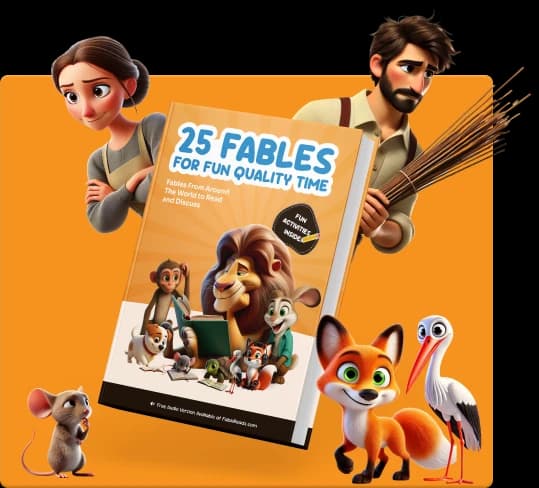Aesop | Greece
Der Fuchs und der Storch
Ein schlauer Fuchs trickst einen Storch mit einem flachen Teller aus, aber der Storch rächt sich mit einem hohen Krug und lässt den Fuchs hungrig zurück.

Es war einmal ein schlauer Fuchs, der in einem großen Wald lebte. Eines Tages wollte der Fuchs seinen Nachbarn, den Storch, reinlegen und lud ihn zum Abendessen ein.
Als es Zeit zum Essen war, servierte der Fuchs die Suppe auf einem flachen Teller. Der Fuchs kicherte leise, während er beobachtete, wie der Storch versuchte zu essen. Der lange, dünne Schnabel des Storches konnte keine Suppe aufnehmen. Egal wie sehr er sich bemühte, die Suppe entwich seinem Schnabel immer wieder.
Ein paar Tage später lud der Storch den Fuchs zum Abendessen ein. Diesmal servierte der Storch das Essen in einem hohen Krug mit einem schmalen Hals. Der Storch benutzte seinen langen Schnabel, um das leckere Essen aus dem Krug zu holen.
Aber der Fuchs hatte ein Problem. Mit seiner kurzen, breiten Schnauze konnte er das Essen am Boden des Krugs nicht erreichen. Er versuchte, am oberen Rand zu lecken und zu schnüffeln, aber er kam einfach nicht an das Essen heran.
Am Ende genoss der Storch sein Mahl, während der Fuchs immer noch hungrig war. Der Fuchs erkannte, dass sein Streich nach hinten losgegangen war.
Kaufen Sie ein Buch und helfen Sie dabei, Fabeln in die Welt zu bringen
Genießen Sie 25 ausgewählte Fabeln fürs Leben, gedruckt. Jeder Kauf unterstützt kostenlose Geschichten für Kinder, Eltern und Lehrer weltweit auf fablereads.com

















